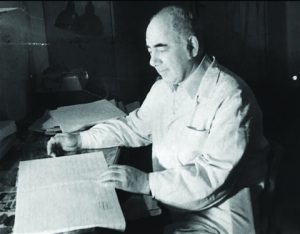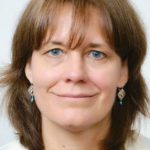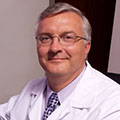SomnusNooze

The Hypersomnia Foundation (HF) is thrilled to announce its attendance at the World Sleep Congress (WSC), hosted by the World Sleep Society, October 7 to 11, 2017 in Prague.
The Congress is well attended by world clinical and scientific sleep medicine experts. Board members Diane Powell and Catherine Page-Rye will be at the meeting to represent the Hypersomnia Foundation and the hypersomnia community.
 Historic Prague is the site of the World Sleep Congress meeting.
Historic Prague is the site of the World Sleep Congress meeting.
HF will have a nonprofit exhibition booth with printed materials about the work of the Hypersomnia Foundation, information about the hypersomnia registry at CoRDS, and more.
The HF is grateful to the WSC for making it financially feasible to lease exhibit space for the purpose of increasing awareness about IH and the works of the foundation. (Note: HF donations will fund the exhibit only. HF Board members have volunteered to fund their own travel and expenses.)
Why is the Hypersomnia Foundation attending the WSC?
“This historic meeting in Prague brings together for the first time the best of sleep medicine with individuals from remote and populated parts of the world and members of major sleep societies.” (Dr. Richard Allen)
Part of the Hypersomnia Foundation’s mission is to build greater awareness of idiopathic hypersomnia, and that includes increasing awareness among physicians. As a gathering of sleep medicine professionals from around the globe, this meeting is a fantastic opportunity for HF to focus on this part of our mission.
The World Sleep Society was very recently established, bringing the World Association of Sleep Medicine (WASM) and World Sleep Federation (WSF) together, and it represents both individual sleep professionals and professional sleep societies of individual countries and regions.
The World Sleep Society’s mission, below, illustrates how well this organization and the coming conference overlap with the HF’s mission and goals:
The fundamental mission of the World Sleep Society is to advance sleep health worldwide.
World Sleep Society fulfills this mission by promoting and encouraging education, research, and patient care throughout the world, particularly in those parts of the world where the practice of sleep medicine is less developed.
* The World Sleep Society acts as a bridge between different sleep societies and cultures, supporting and encouraging worldwide exchange of clinical information and scientific studies related to sleep medicine.
* The World Sleep Society fosters development and exchange of information for worldwide and regional standards of practice for sleep medicine.
Why is a meeting in Prague significant for idiopathic hypersomnia?
 Prague is the city where physician Bedrich Roth first coined the term “idiopathic hypersomnia.”
Prague is the city where physician Bedrich Roth first coined the term “idiopathic hypersomnia.”
Prague is the birthplace of Dr. Bedrich Roth (1919-1989), the first to describe idiopathic hypersomnia. Read more about the history of Dr. Roth’s seminal work on IH that appears at the end of this article.
Will hypersomnia be included as a topic in the World Sleep Congress meeting?
The answer is YES!
Two physicians from the Hypersomnia Foundation’s medical and scientific advisory boards** are scheduled to present. In addition, a Czech physician who collaborated extensively with Bedrich Roth will address hypersomnias in a keynote speech.
* Soňa Nevšímalová, MD, Charles University (Czech Republic)
Her topic:
Central Hypersomnias Through the Eyes of Time.
An additional symposium will comprehensively review the latest advances in understanding, diagnosing and treating idiopathic hypersomnia, derived from large series of patients studied in tertiary referral centers.
* Symposium: “Idiopathic hypersomnia: a neglected disorder”
 Isabelle Arnulf, MD, PhD
Isabelle Arnulf, MD, PhD
Chair: I. Arnulf, France**
Speakers: I. Arnulf, France;**
K. Sonka, Czech Republic;
D. Rye,** United States;
G. Mayer, Germany
* A daylong course touching on aspects of sleep medicine and research will include a discussion of IH by D. Rye,** United States.
 David Rye, MD, PhD
David Rye, MD, PhD
“This course will integrate research and clinical practice, bringing together basic science and clinical advances, putting together the best of a ‘year in review’ and a ‘basic science/methods’ update for the sleep physician.” The span of topics should include technology, controversial areas, and recent (2-3 years) literature. The course will aim to provide a substantial sweep across multiple topic areas, nearly a data blitz, and reach into areas outside the traditional sleep journals but of direct relevance to the practice and science of sleep medicine. The course will be on Sunday, October 8.
HF Board members will be providing updates from the conference on Facebook, Instagram (HypersomniaFoundation) and Twitter (@HypersomniaNews). Be sure to check them out – October 7-11.
*******
For further reading on the history of Bedrich Roth and IH:
Following are excerpts from Soňa Nevšímalová’s chapter, “Idiopathic Hypersomnia, Sleep Medicine: A Comprehensive Guide to its Development, Clinical Milestones, and Advances in Treatment,” pp 223-228:
“The first author to identify the clinical differences between narcolepsy and other types of hypersomnia was Bedrich Roth, a Czech neurologist, neurophysiologist, and sleep researcher. In 1956, he published a detailed description of difficulties in awakening – sleep drunkenness, recognized later as a leading clinical symptom of idiopathic hypersomnia. He identified sleep drunkenness as a symptom (inertia connected with prolonged nocturnal sleep), as a syndrome (characterized by patients suffering from prolonged nocturnal sleep, marked difficulty awakening, and daytime sleepiness), and as an independent nosological entity.
In that paper he described 20 patients with sleep drunkenness mostly of the independent form (11 patients). The disease usually began in younger age (between 15 and 33 years); the patients often had positive family history (5 out of 11 families) and showed features of depression. The most characteristic symptom consisted of prolonged deep nocturnal sleep accompanied by sleep drunkenness during waking and prolonged daytime naps generally lasting for 1-3 hours or more, but occasionally less….Sleep drunkenness was also noted in 6 out of 127 narcoleptic patients.”
Dr. Nevšímalová notes that Bedrich Roth proved that idiopathic hypersomnia existed beyond the city of Prague:
Around 1960 Bedrich Roth accepted an invitation from Allan Rechtschaffen to visit his sleep laboratory in Chicago and examine patients with sleep drunkenness in the USA. The birth of a new clinical entity supporting polysomnography (PSG) findings seemed rather amusing (sic) there. When Bedrich Roth arrived, everybody in the USA believed that this disease existed only in Prague. However, Roth arranged a short interview (at) the local television explaining the clinical symptoms of the disease (long nocturnal sleep with difficulty awakening and long-lasting daytime naps) and asked TV viewers for cooperation. Everybody in the Chicago team was really surprised to see, exactly then and there, the TV show lineup of people waiting to be examined by Bedrich Roth. After a clinical interview, he chose 10 patients and the first PSG findings of this ailment were published in patients with idiopathic hypersomnia who underwent PSG recording for two nonconsecutive nights…Three years later, a complete clinical description of hypersomnia with sleep drunkenness (58 cases), enriched by long-term nocturnal monitoring (9 cases) appeared in the literature giving a clear picture of this clinical entity.
Sleep drunkenness was characterized by difficulty awakening accompanied by confusion, disorientation, poor motor coordination, slowness, and repeated dozing off. Patients reported that these symptoms occurred almost every morning, and nearly all reported abnormally prolonged sleep.”
